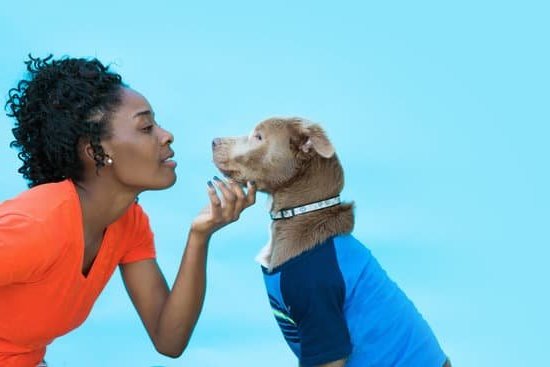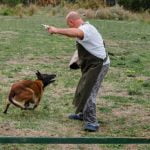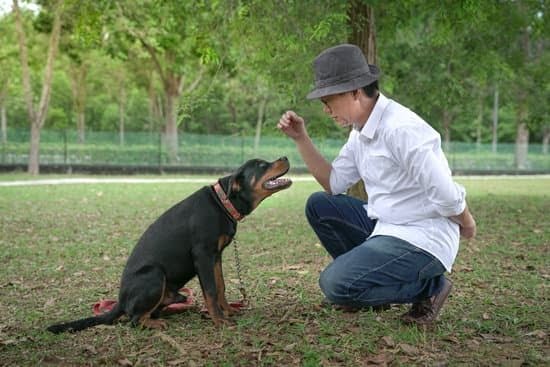Training a dog to become a guard dog is a serious responsibility that requires dedication, patience, and expertise. Guard dogs play a crucial role in protecting property, deterring intruders, and providing security to their owners. In this article, we will delve into the essential steps and techniques involved in the process of training your furry companion to become an effective guard dog.
To start the journey of transforming your beloved pet into a reliable guard dog, it is crucial to understand the fundamental principles behind this specialized training. Guard dogs are not only trained to bark at strangers or potential threats; they are also taught to assess situations, make quick decisions, and act accordingly to protect their territory and loved ones. This comprehensive training goes beyond basic obedience commands and requires a structured approach focusing on security-related skills.
Choosing the right breed for guard dog training is an essential first step in the process. While any breed can potentially be trained as a guard dog with dedication and consistency, certain breeds such as German Shepherds, Doberman Pinschers, Rottweilers, and Belgian Malinois are often preferred due to their natural protective instincts and intelligence. Understanding your chosen breed’s characteristics and temperament is vital in tailoring the training program to suit their specific needs and abilities.
Choosing the Right Breed for Guard Dog Training
When it comes to training a guard dog, one of the most crucial decisions you will make is choosing the right breed for the job. Not all dogs are suitable for guard dog training, as some breeds are naturally more protective and assertive than others. Breeds such as German Shepherds, Rottweilers, Doberman Pinschers, and Belgian Malinois are commonly chosen for guard dog roles due to their intelligence, loyalty, and strong protective instincts.
Before selecting a breed for guard dog training, it is essential to consider factors such as the size of your property, your level of experience in training dogs, and the specific tasks you want your guard dog to perform. Different breeds have different strengths and weaknesses when it comes to guarding abilities, so choose a breed that aligns with your needs and lifestyle.
Additionally, consider the temperament and energy level of the breed to ensure that it is a good fit for your family and living situation.
Once you have chosen a suitable breed for guard dog training, it is important to start the process early. Puppies are easier to train than adult dogs, so begin socializing and introducing basic obedience commands as soon as you bring your new furry friend home.
Consistent training methods, positive reinforcement techniques, and patience are key when teaching a dog how to be an effective guard dog. With dedication and proper guidance, any breed can learn how to protect its family and property effectively.
| Guard Dog Breed | Main Characteristics |
|---|---|
| German Shepherd | Intelligent, loyal, strong protective instincts |
| Rottweiler | Fearless, confident, excellent guarding capabilities |
| Doberman Pinscher | Energetic, alert, natural protectors |
Basic Obedience Training for Guard Dogs
Basic obedience training is essential when it comes to preparing your dog for guard dog duties. This foundational training helps establish communication, respect, and discipline between you and your canine companion. Obedience training includes teaching commands such as sit, stay, come, heel, and leave it. These commands are not only useful in everyday situations but also crucial during guard dog training.
During obedience training, consistency is key. Repetition and positive reinforcement are important tools in shaping your dog’s behavior. Using treats, praise, or play as rewards can motivate your dog to follow commands effectively. It is also important to practice patience and understanding as each dog learns at their own pace. Remember that the goal of obedience training is to build a strong bond with your dog and create a foundation for more advanced training techniques.
In addition to basic commands, guard dogs should also be trained on how to behave appropriately around people and other animals. Socialization plays a vital role in ensuring that your guard dog can distinguish between friend and foe. Desensitization techniques can help your dog remain calm and focused in various environments and situations. By exposing your dog to different stimuli in a controlled manner, you can help them develop confidence and self-control as a reliable guard dog.
Socialization and Desensitization Techniques
When training a dog to become a guard dog, socialization and desensitization are crucial aspects that cannot be overlooked. Socialization involves exposing your dog to different people, animals, environments, and stimuli in a controlled and positive manner. This helps the dog develop confidence, adaptability, and the ability to assess situations accurately. Desensitization, on the other hand, involves gradually exposing the dog to triggers that may cause fear or aggression, while teaching them to remain calm and focused.
One effective way to socialize your guard dog is by enrolling them in obedience classes or group training sessions. This allows the dog to interact with other dogs and people in a structured environment under the guidance of a professional trainer.
Additionally, taking your dog out for regular walks in public places can help them get accustomed to various sights, sounds, and smells. It is important to monitor your dog’s reactions during socialization exercises and intervene if they show signs of fear or aggression.
Desensitization techniques involve systematic exposure to stimuli that may trigger negative behaviors in the dog. For example, if your guard dog reacts aggressively towards strangers approaching your property, you can start by having a friend approach from a distance while rewarding the dog for remaining calm. Gradually decrease the distance between the stranger and the dog while continuing to reward calm behavior.
This process helps teach the dog to remain composed in potentially challenging situations. By incorporating socialization and desensitization techniques into your training regimen, you can help your dog develop the necessary skills and temperament to excel as a guard dog.
Advanced Guard Dog Training
Training your dog to become a reliable guard dog goes beyond basic obedience skills – it also involves advanced techniques for protection and security. By mastering protection commands and techniques, you can enhance your dog’s ability to defend you and your property effectively. Here are some key strategies for advanced guard dog training:
- Teach the “Alert” Command: Start by teaching your dog to alert you when someone approaches the premises. This can be done through a combination of verbal commands and physical cues.
- Train in Bite Work: This aspect of training involves teaching your dog how to use its natural instinct to protect by using controlled aggression. Seek professional guidance when introducing bite work into your training regimen.
- Practice Scenario Training: Create scenarios that simulate real-life situations where your dog may need to protect you or your property. By repeating these scenarios, you can reinforce the desired protective behaviors.
In addition to these techniques, consistency and patience are crucial when training your dog for advanced guard duties. Always prioritize positive reinforcement and avoid punishment-based methods that may create fear or distrust in your canine companion. Remember, the goal is to develop a strong bond with your guard dog built on trust and respect.
By incorporating these protection commands and techniques into your training routine, you can help elevate your dog’s guarding abilities to new heights. With dedication and proper guidance, you can transform your beloved pet into a dependable protector that provides security and peace of mind for you and your loved ones.
Building Confidence in Your Guard Dog
Understanding the Importance of Confidence
Confidence is a crucial trait for any guard dog to possess. A confident guard dog will be more reliable and effective in protecting its territory and family. Dogs with low confidence may hesitate or display fear when faced with a threat, which can hinder their ability to act decisively. Therefore, building and maintaining your guard dog’s confidence should be a priority throughout their training.
Consistent Training and Positive Reinforcement
One of the most effective ways to build confidence in your guard dog is through consistent training and positive reinforcement. By practicing obedience commands regularly and rewarding good behavior with treats or praise, you can help boost your dog’s self-assurance. Repetition is key in reinforcing positive behaviors and instilling confidence in your guard dog. Additionally, using positive reinforcement techniques creates a bond of trust between you and your pet, further enhancing their confidence levels.
Exposure to Various Environments
To ensure that your guard dog is confident in different situations, it is essential to expose them to various environments during their training. Introducing your dog to new places, people, and experiences can help desensitize them to unfamiliar stimuli, reducing anxiety and boosting their overall confidence.
Socialization plays a significant role in building a well-rounded guard dog that can adapt confidently to any situation they may encounter while on duty. By gradually exposing them to different environments, you can help prepare your guard dog for any challenges they may face while protecting your home or property.
By following these strategies for building confidence in your guard dog, you can enhance their capabilities as a protector and ensure that they carry out their duties effectively. Remember that confident dogs are more likely to respond quickly and decisively in threatening situations, making them invaluable assets as guard dogs.
Physical Conditioning and Health Maintenance for Guard Dogs
Exercise and Fitness
One of the key aspects of maintaining a healthy guard dog is ensuring they receive enough exercise to stay fit and agile. Regular exercise not only helps in keeping your dog physically healthy but also plays a significant role in their mental well-being.
Engaging in activities such as walks, runs, and interactive play sessions can help keep your guard dog in top shape. Additionally, providing them with mentally stimulating toys or puzzles can prevent boredom and reduce the likelihood of destructive behavior.
Nutrition and Diet
Proper nutrition is essential for the overall health and well-being of any dog, especially one being trained for guarding duties. Consult with your veterinarian to determine the best diet plan for your guard dog based on their breed, size, age, and activity level. A balanced diet that includes high-quality protein, fats, carbohydrates, vitamins, and minerals is crucial. It’s also important to monitor your dog’s weight and adjust their portions accordingly to prevent obesity or malnutrition.
Regular Veterinary Check-Ups
To ensure that your guard dog remains in optimal health, regular visits to the veterinarian are necessary. Routine check-ups allow the vet to assess your dog’s overall health status, address any underlying issues early on, administer vaccinations if needed, and provide preventive care against parasites such as ticks and fleas.
Additionally, staying up-to-date with vaccinations can protect not only your guard dog but also yourself and others who interact with them regularly from potential diseases. By prioritizing their physical well-being through proper conditioning and health maintenance practices, you can ensure that your guard dog is always ready to fulfill their protective duties effectively.
Legal Considerations and Responsibilities of Having a Guard Dog
When considering training your dog to become a guard dog, it is crucial to understand the legal considerations and responsibilities that come with owning such a trained animal. Being a responsible pet owner goes beyond just training your dog well; it also involves ensuring that you are in compliance with local laws and regulations regarding guard dogs. Here are some key legal aspects to keep in mind when training your dog for this specific role:
- Check local ordinances: Before starting the training process, research and understand the laws in your area regarding guard dogs. Some municipalities have strict regulations on owning guard dogs, including licensing requirements, insurance obligations, and specific restrictions on where they can be kept.
- Liability issues: Owning a trained guard dog comes with increased liability. If your dog were to harm someone or another animal while on duty as a guard dog, you could be held legally responsible. It is essential to have proper insurance coverage to protect yourself in case of any incidents.
- Training certifications: In some jurisdictions, there may be requirements for certification or licensing of a guard dog and their handler. Make sure to comply with any necessary training programs or certifications to ensure that you are meeting legal standards.
It is important to remember that owning a guard dog is not just about security but also about being a responsible and informed pet owner. By understanding and following the legal considerations associated with having a trained guard dog, you can ensure that both you and your furry companion stay on the right side of the law while providing added protection for your home or property.
- Seek professional advice: Consult with an experienced trainer or legal expert who specializes in guard dogs to get guidance on navigating the legal aspects of owning one.
- Regularly review laws: Stay up-to-date on any changes in laws or regulations regarding guard dogs in your area to avoid any potential legal issues.
- Document everything: Keep records of your dog’s training, certifications, and vaccinations in case they are ever needed as evidence of compliance with legal requirements.
Conclusion
Training a dog to become a guard dog is a serious and challenging endeavor that requires dedication, consistency, and patience. By following the appropriate steps outlined in this article, you can successfully mold your canine companion into an effective protector of your home and loved ones.
One of the most crucial aspects of training a guard dog is to establish a strong foundation in basic obedience skills. This includes commands such as sit, stay, come, and heel, which form the building blocks for more advanced protection training. Socialization and desensitization techniques are also essential to ensure that your guard dog is well-adjusted and able to distinguish between friend and foe.
Advanced guard dog training involves teaching specific protection commands and techniques that will enable your canine partner to respond effectively in threatening situations. Building confidence in your guard dog through positive reinforcement and consistent practice is key to nurturing their natural protective instincts. Additionally, maintaining your guard dog’s physical conditioning and health is vital for them to perform at their best when called upon to protect.
In conclusion, successfully training your dog into a guard dog requires a combination of proper breed selection, obedience training, socialization techniques, advanced protection commands, confidence building exercises, physical conditioning, and an understanding of the legal responsibilities involved. With commitment and perseverance, you can transform your beloved pet into a loyal guardian that will provide you with peace of mind and security for years to come.
Frequently Asked Questions
How Do I Make My Dog a Friendly Guard Dog?
To make your dog a friendly guard dog, start by socializing them with different people, animals, and environments from a young age. Train them to differentiate between normal visitors and potential threats. Use positive reinforcement for good behavior and basic obedience training to ensure they listen to commands when needed.
Can a Pet Dog Be a Guard Dog?
Yes, a pet dog can be trained to be a guard dog with the right techniques. It’s essential to understand that a guard dog should still be friendly and sociable towards people when not in protection mode. Proper training, socialization, and clear boundaries are key to raising a pet into an effective guard dog.
What Age Do Dogs Become Guard Dogs?
Dogs can begin their journey as guard dogs as early as 6-9 months old if they exhibit the necessary temperament traits such as confidence, alertness, and loyalty. However, it’s crucial to continue training throughout their life to maintain their skills and ensure they mature into reliable protectors.

Welcome to the blog! I am a professional dog trainer and have been working with dogs for many years. In this blog, I will be discussing various topics related to dog training, including tips, tricks, and advice. I hope you find this information helpful and informative. Thanks for reading!





